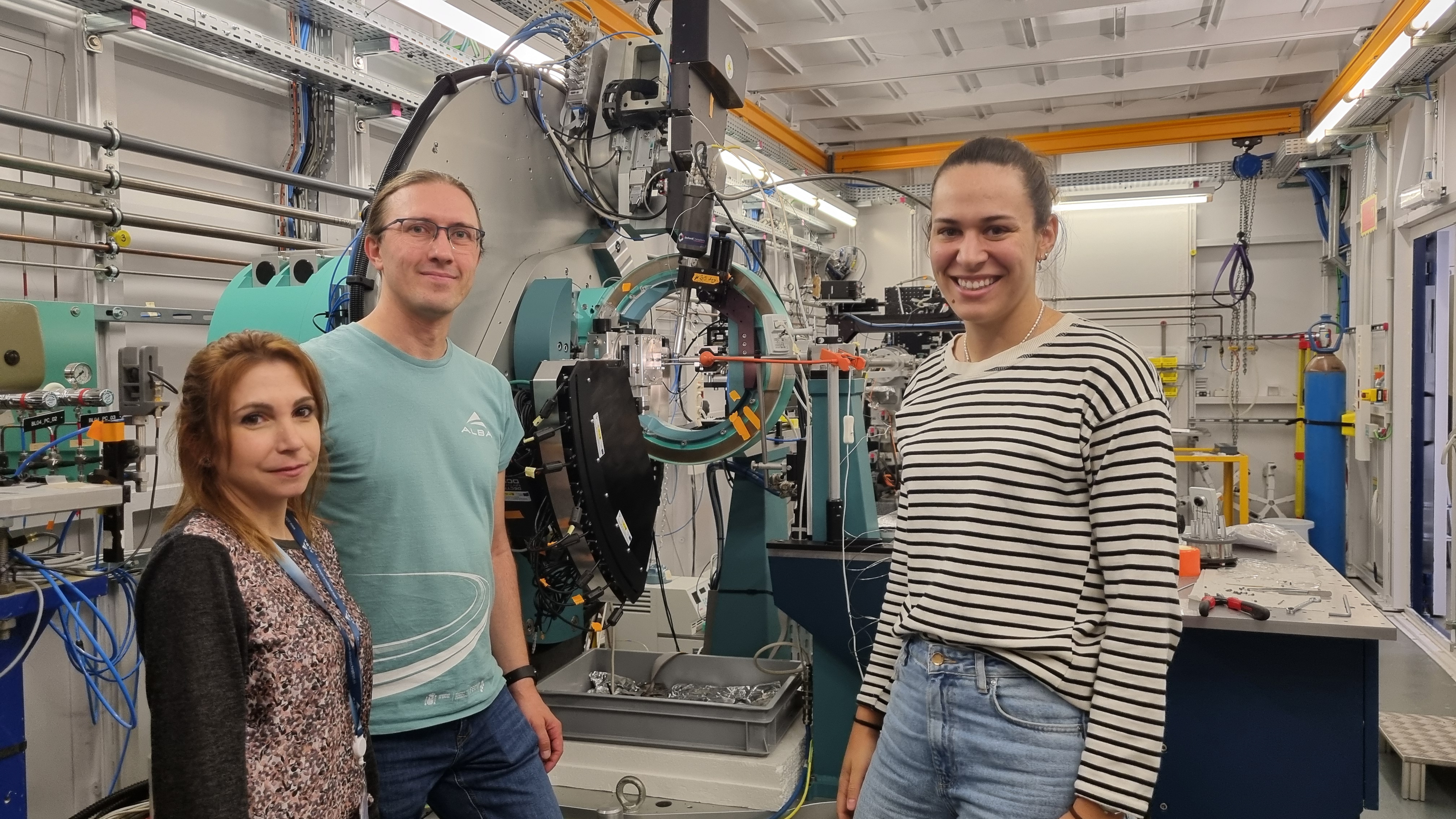ALBA Synchrotron

A team of Spanish researchers has developed a novel method to stabilize nanoscale zeolitic-imidazolate frameworks (ZIFs) for use in mechanical energy storage systems. By adding fluorine atoms to these nanomaterials, the water stability and energy storage capacity are enhanced, outperforming existing ZIF materials. The study, published in ACS Applied Materials & Interfaces, employed cutting-edge techniques, including synchrotron light experiments at the ALBA Synchrotron, to analyze the materials' structure and performance.
Zeolitic-imidazolate frameworks (ZIFs), a subclass of metal-organic frameworks (MOFs), are being explored for a variety of advanced applications, ranging from gas separation and catalysis to drug delivery and mechanical energy storage. ZIF materials have several key advantages: they are highly porous, enabling efficient energy storage, and exhibit excellent thermal stability. However, one significant drawback limits their industrial application — their instability in water. Over time, ZIFs tend to degrade in humid environments, compromising their long-term performance, especially under conditions of prolonged immersion and high-pressure water intrusion/extrusion such as those required for mechanical energy storage.
In this study, a multi-institutional team of Spanish researchers investigated, for the first time, the use of fluorinated MOFs for mechanical energy storage and dissipation. The research, published in ACS Applied Materials & Interfaces, was carried out by a collaboration of researchers at CIC EnergiGUNE, the Laboratorio de Materiales Avanzados of Universidad de Alicante, the ALBA Synchrotron, and the Institute for Chemical Research (IIQ) of CSIC-University of Seville.
The addition of fluorine atoms to a material's structure increases its hydrophobicity, making it more stable in aqueous environments. The researchers synthesized two types of fluorinated ZIFs using a simple, scalable approach based on a one-pot coprecipitation method from a methanol-water solution. The mechanical properties of these materials were then tested through water intrusion/extrusion experiments, where water is forced into the ZIF’s hydrophobic pores under pressure, simulating a mechanical energy storage process.
The fluorinated ZIFs not only exhibited enhanced hydrophobicity but also showed modified framework dynamics, acting as improved "molecular springs" that can store and release mechanical energy more efficiently. The team also demonstrated that by adjusting the type of fluorine-containing ligand, the performance of these ZIFs could be fine-tuned, enabling the design of a wide range of fluorine-modified ZIFs with unique properties.
The ALBA Synchrotron played a critical role in the study, providing synchrotron X-ray powder diffraction (SXRPD) data to analyze the crystal structure of the materials. This detailed structural analysis was crucial in validating the materials' stability and performance in water-based environments.
Overall, these new fluorinated ZIF materials demonstrated superior performance compared to traditional ZIF-8. They were more stable in water and withstood multiple water intrusion/extrusion cycles without significant degradation. This study not only advances the field of mechanical energy storage but also opens a new pathway for improving the stability of ZIFs in various applications, such as separation technologies, gas storage and nanotriboelectric generators.

Illustration of the 3D structure of one of the fluorinated ZIFs evaluated.